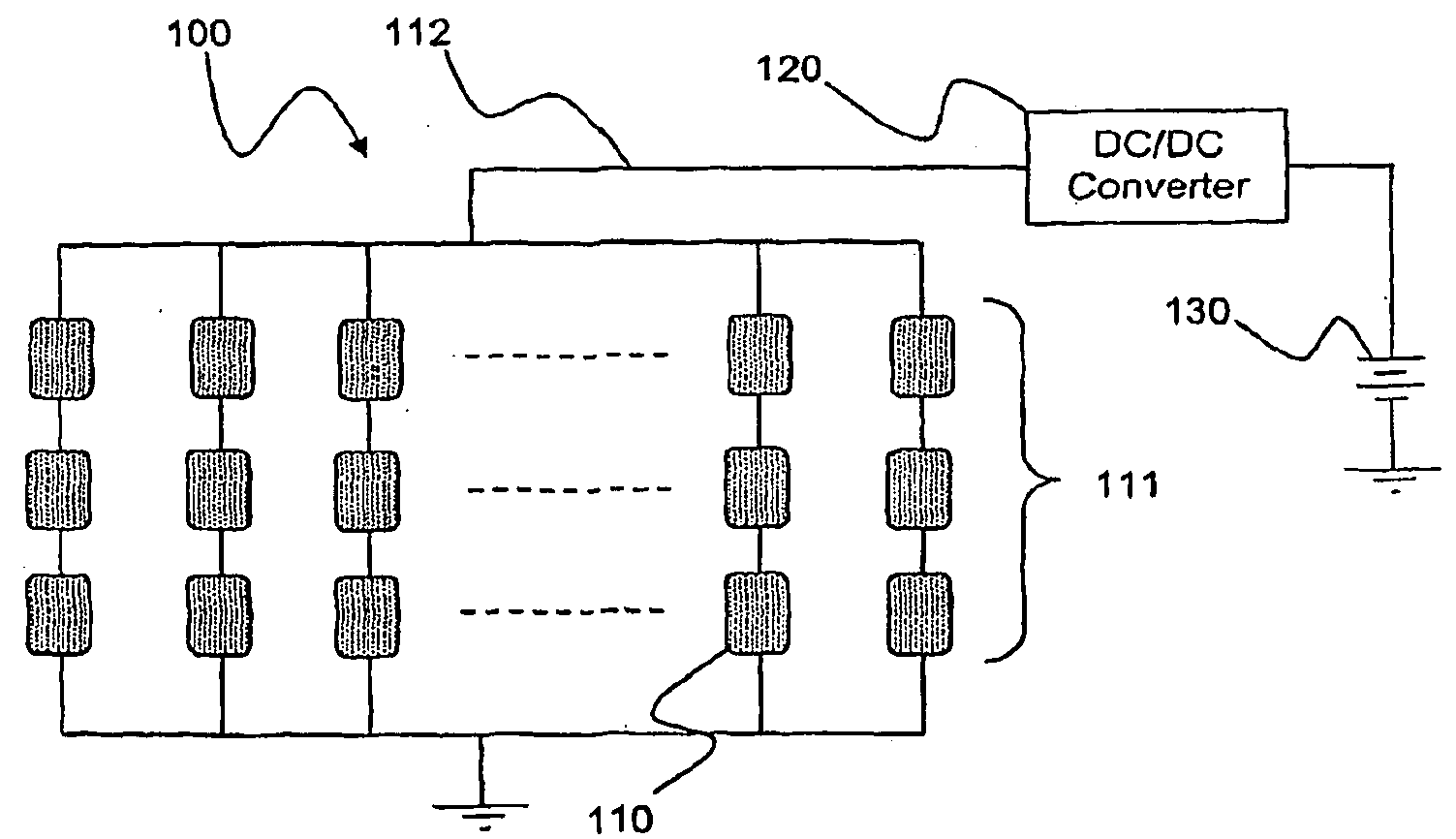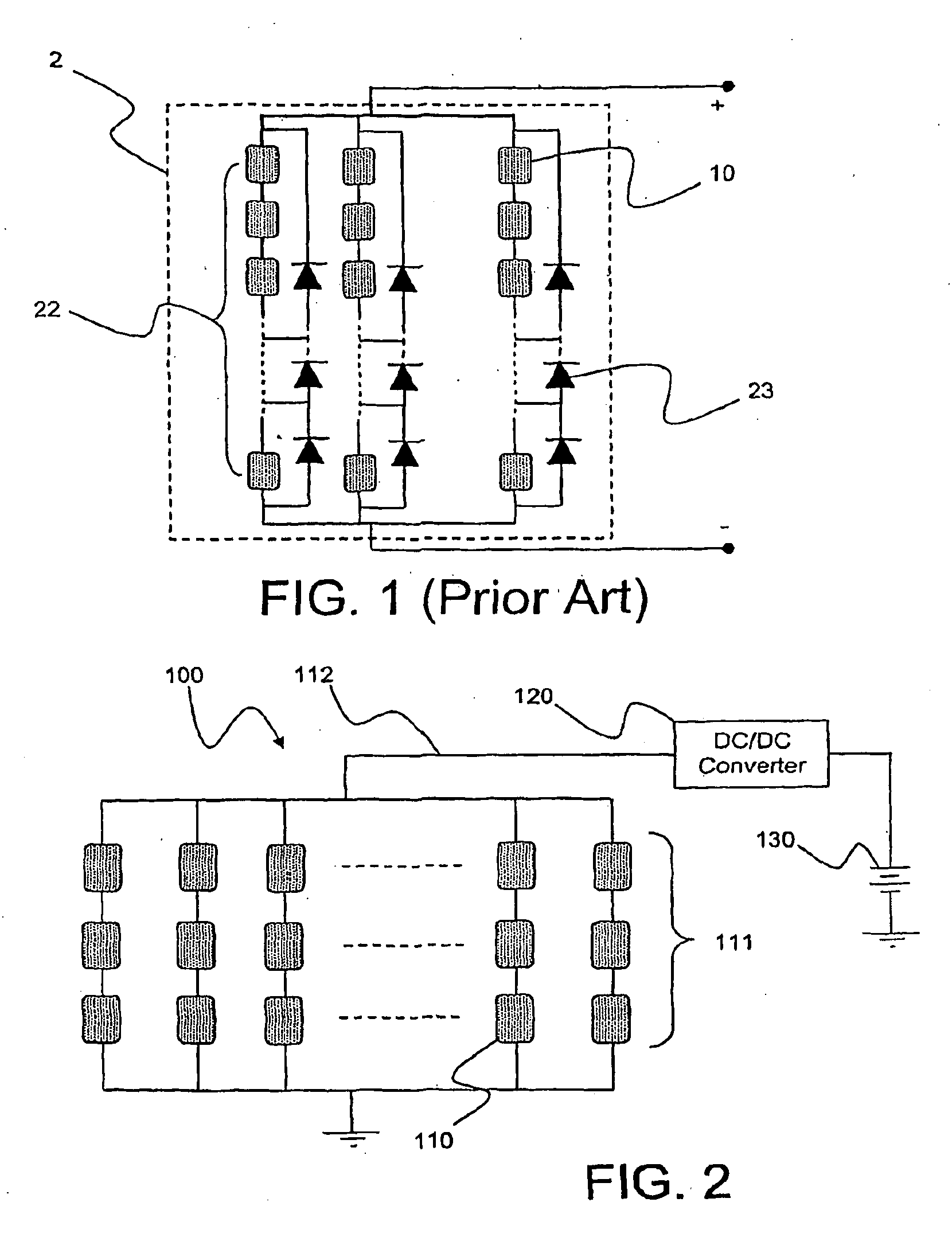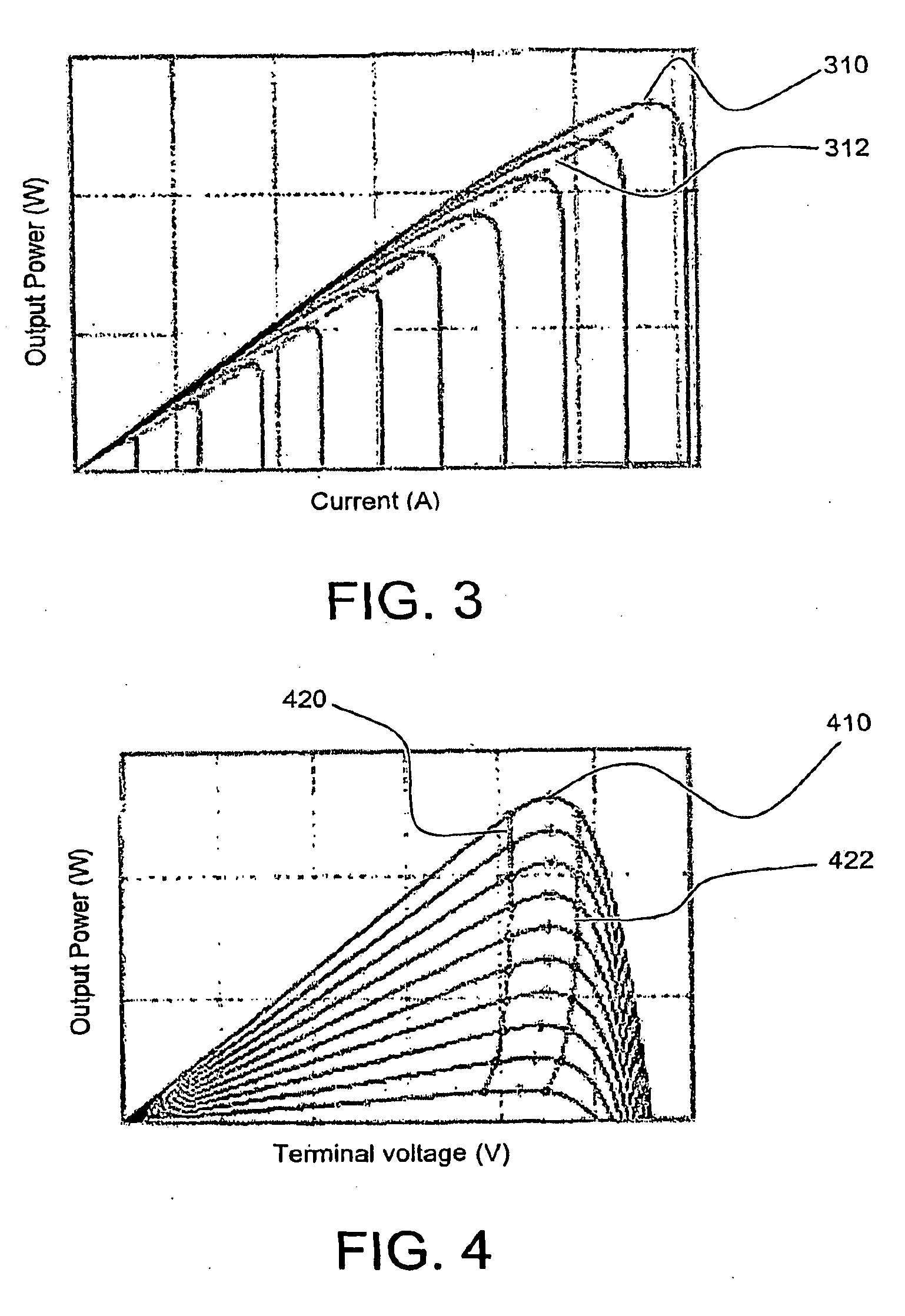Apparatus and method for enhanced solar power generation and maximum power point tracking
a solar array and power generation technology, applied in the direction of electric variable regulation, process and machine control, instruments, etc., can solve the problems of continuous change of illumination conditions on the surface partial shading and/or continuous shadow conditions of the solar array, etc., to achieve the effect of maximizing the power generation of the solar array
- Summary
- Abstract
- Description
- Claims
- Application Information
AI Technical Summary
Benefits of technology
Problems solved by technology
Method used
Image
Examples
Embodiment Construction
[0038]As discussed in the Summary of the Invention section, the present subject matter is particularly concerned with optimization of solar cell size and connections to maximize power generation of the solar array under partially shading or continuously changing shadow conditions.
[0039]Selected combinations of aspects of the disclosed technology correspond to a plurality of different embodiments of the present invention. It should be noted that each of the exemplary embodiments presented and discussed herein should not insinuate limitations of the present subject matter. Features or steps illustrated or described as part of one embodiment may be used in combination with aspects of another embodiment to yield yet further embodiments. Additionally, certain features may be interchanged with similar devices or features not expressly mentioned which perform the same or similar function.
[0040]Reference will now be made in detail to the presently preferred embodiments of the subject solar ...
PUM
 Login to View More
Login to View More Abstract
Description
Claims
Application Information
 Login to View More
Login to View More - R&D
- Intellectual Property
- Life Sciences
- Materials
- Tech Scout
- Unparalleled Data Quality
- Higher Quality Content
- 60% Fewer Hallucinations
Browse by: Latest US Patents, China's latest patents, Technical Efficacy Thesaurus, Application Domain, Technology Topic, Popular Technical Reports.
© 2025 PatSnap. All rights reserved.Legal|Privacy policy|Modern Slavery Act Transparency Statement|Sitemap|About US| Contact US: help@patsnap.com



